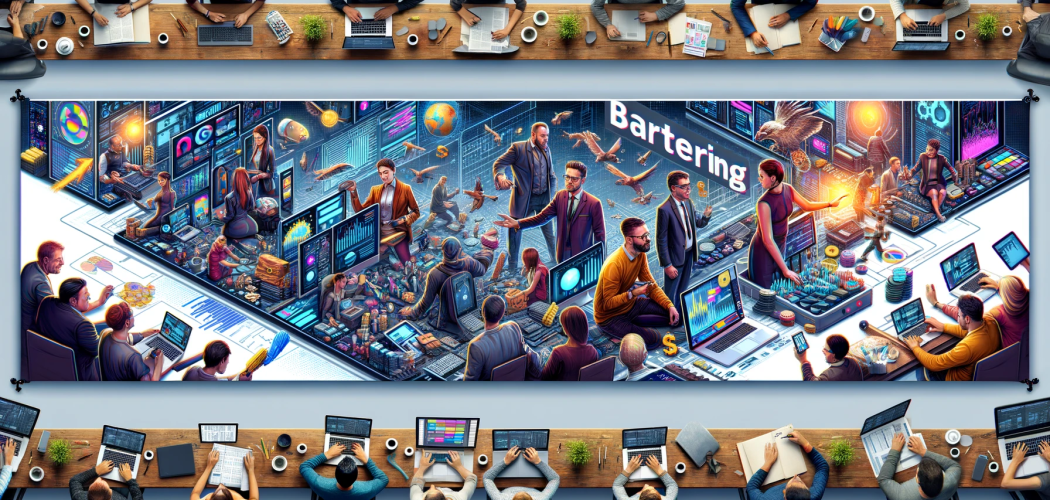
The Art of Bartering: A Comprehensive Guide for Freelancers and Digital Service Providers
Bartering, an ancient practice that has found new relevance in the modern digital age, is an exciting way to trade goods and services without the need for money. This guide delves into the concept of bartering, exploring its benefits, challenges, and practical applications, especially for freelancers, online agencies, employers, and digital service providers.
Caption: A web designer and a digital marketer exchanging services.

Table of Contents
- What is Bartering?
- History of Bartering
- Benefits of Bartering for Freelancers
- Challenges and Risks of Bartering
- How to Get Started with Bartering
- Real-Life Examples of Bartering
- Tips for Successful Bartering
- Conclusion
- FAQs
What is Bartering?
Bartering is the direct exchange of goods or services without the use of money. It's a system where individuals or businesses trade items of mutual interest, creating a win-win situation for both parties. In today's digital world, bartering can be a strategic tool for freelancers and online agencies to leverage their skills and resources.
History of Bartering
The concept of bartering dates back to 6000 BC, introduced by Mesopotamian tribes. Historically, it was a prevalent method of trade before the invention of money. Fast forward to the present, bartering has evolved, adapting to the digital economy's needs.
Caption: A bustling barter marketplace for freelancers.

Benefits of Bartering for Freelancers
-
Cost-Effective Growth
For freelancers and small businesses, bartering can be a cost-effective way to grow. By trading services, you can save cash while acquiring the skills or products you need.
-
Networking Opportunities
Bartering opens doors to new networking opportunities. Collaborating on barter deals often leads to long-term business relationships and referrals.
Challenges and Risks of Bartering
-
Valuation Discrepancies
One significant challenge in bartering is the valuation of goods or services. Both parties must agree on the perceived value, which can sometimes be subjective.
-
Trust Issues
Trust is crucial in bartering. Without formal contracts, there's a risk that one party might not fulfill their end of the bargain.
Caption: A graphic designer and web developer trading skills.

How to Get Started with Bartering
-
Identify Your Assets
Start by identifying what you can offer. List your skills, services, or products that could be of value to others.
-
Find Barter Partners
Look for potential barter partners through networking events, social media, or dedicated bartering platforms.
Real-Life Examples of Bartering
-
Digital Marketing for Web Design
A digital marketer and a web designer could barter their services. The marketer could help with SEO and social media campaigns, while the designer creates a website.
Tips for Successful Bartering
- Clear Communication: Ensure both parties clearly understand the terms of the barter.
- Document Agreements: Even without formal contracts, documenting the agreement can prevent misunderstandings.
- Be Flexible: Be open to negotiating and adjusting the terms to suit both parties.
Conclusion
Bartering is a powerful tool for freelancers and digital service providers. It offers a creative way to grow your business, save money, and build valuable connections. By understanding the benefits and challenges and following best practices, you can successfully integrate bartering into your business strategy.
FAQs
Q: What is bartering?
A: Bartering is the direct exchange of goods or services without using money.
Q: How can freelancers benefit from bartering?
A: Freelancers can save money, gain new clients, and build professional networks through bartering.
Q: What are the risks of bartering?
A: The main risks include valuation discrepancies and trust issues.
.png)